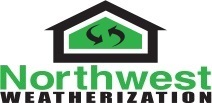Choosing the right vapor barrier for your project is a crucial decision that affects the longevity and efficacy of your construction or renovation work. A vapor barrier, essentially, is a material used to prevent moisture from penetrating walls, ceilings, and floors, thereby reducing the likelihood of mold growth and structural damage. Given the variety of options available, understanding the types of vapor barriers, their applications, and the importance of professional vapor barrier installation services is essential. This comprehensive guide aims to equip you with the knowledge needed to make an informed decision when selecting a vapor barrier for your specific project needs.
Understanding Vapor Barriers
A vapor barrier is designed to restrict the movement of water vapor through building assemblies, which is critical in preventing moisture-related issues. The effectiveness of a vapor barrier is measured by its permeability rating, with a lower rating indicating a more effective barrier against moisture transmission. Selecting the appropriate vapor barrier involves considering the climate, the part of the building where it will be used, and the specific requirements of your project.
Types of Vapor Barriers
1. Polyethylene Sheet
Polyethylene sheeting is one of the most common types of vapor barriers. Available in various thicknesses, it’s typically used in walls, crawl spaces, and under slabs. Its effectiveness depends on the thickness of the sheeting, with thicker sheets offering better moisture protection.
2. Aluminum Foil
Aluminum foil is a highly effective vapor barrier that is often used in roofing applications or within wall assemblies. It is particularly useful in areas that require a high degree of moisture control due to its low permeability.
3. Vapor Barrier Paints
Vapor barrier paints, or vapor diffusion retarders, are specially formulated coatings that can be applied to walls and ceilings to prevent moisture penetration. They are an ideal choice for retrofitting existing buildings where installing traditional vapor barriers might be impractical.
4. Foil-backed Drywall
For interior applications, foil-backed drywall offers a convenient way to integrate a vapor barrier into wall assemblies. It combines the structural element of drywall with the moisture-blocking capabilities of aluminum foil.
5. Membranes
Membranes, such as those made from rubber or synthetic materials, are used in various applications, including roofs, walls, and foundations. They are flexible, making them suitable for complex shapes and surfaces.
Factors to Consider When Choosing a Vapor Barrier
Climate
The choice of vapor barrier is significantly influenced by the climate. In colder climates, a vapor barrier is typically installed on the interior side of insulation to prevent indoor moisture from condensing within the insulation layer. Conversely, in hot and humid climates, the vapor barrier might be installed on the exterior side to prevent outdoor moisture from entering the building.
Permeability
Select a vapor barrier with the appropriate permeability rating for your project. A lower perm rating is better for areas with high moisture levels, while a higher perm rating might be suitable for less critical applications.
Material Compatibility
Ensure that the vapor barrier material is compatible with other building materials used in your project to avoid chemical reactions or physical damage that could compromise the barrier’s effectiveness.
Durability and Maintenance
Consider the durability of the vapor barrier material and any maintenance requirements. Some materials may be more prone to damage or degradation over time, affecting their performance.
Vapor Barrier Installation Services
Professional vapor barrier installation services are vital to ensuring that the barrier is installed correctly and functions as intended. Incorrect installation can lead to gaps, tears, or other issues that compromise the barrier’s effectiveness. Professional installers have the expertise and tools necessary to install vapor barriers properly, taking into account the unique aspects of your project.
Benefits of Professional Installation
- Expertise: Professionals understand the nuances of vapor barrier installation, including how to handle tricky areas like corners, edges, and penetrations to ensure a continuous barrier.
- Time and Cost Efficiency: Expert installers can complete the job more quickly and efficiently than DIY efforts, potentially saving money in the long run by avoiding moisture-related repairs.
- Warranty and Compliance: Many vapor barrier products come with warranties that are only valid if installed by certified professionals. Additionally, professionals are familiar with building codes and regulations, ensuring that your project complies with local requirements.
Conclusion
Selecting the right vapor barrier for your project is a multifaceted decision that involves considering the climate, the specific needs of your project, and the types of vapor barriers available. From polyethylene sheeting to foil-backed drywall and vapor barrier paints, each option has its unique advantages and applications. However, the effectiveness of any vapor barrier ultimately depends on its proper installation. Therefore, enlisting professional vapor barrier installation services is recommended to ensure that the barrier is installed correctly, providing effective moisture control for your building. By taking the time to choose the right vapor barrier and ensuring it is professionally installed, you can protect your project from moisture-related issues, ensuring its longevity and durability.
- Attic Insulation Portland OR
- Attic Insulation Tualatin OR
- Attic Insulation West Linn OR
- Crawl Space Cleaning Beaverton OR
- Crawl Space Cleaning Tualatin OR
- Insulation Installation Beaverton OR
- Insulation Installation Gresham OR
- Insulation Installation Hillsboro OR
- Insulation Installation Lake Oswego OR
- Insulation Installation Milwaukie OR
- Insulation Installation Newberg OR
- Insulation Installation Oregon City OR
- Insulation Installation Portland OR
- Insulation Installation Salem OR
- Insulation Installation Sherwood OR
- Insulation Installation Tualatin OR
- Insulation Installation West Linn OR
- Insulation Installation Wilsonville OR
- Vapor Barrier Installation Beaverton OR
- Vapor Barrier Installation Hillsboro OR
- Vapor Barrier Installation Lake Oswego OR
- Vapor Barrier Installation Portland OR
